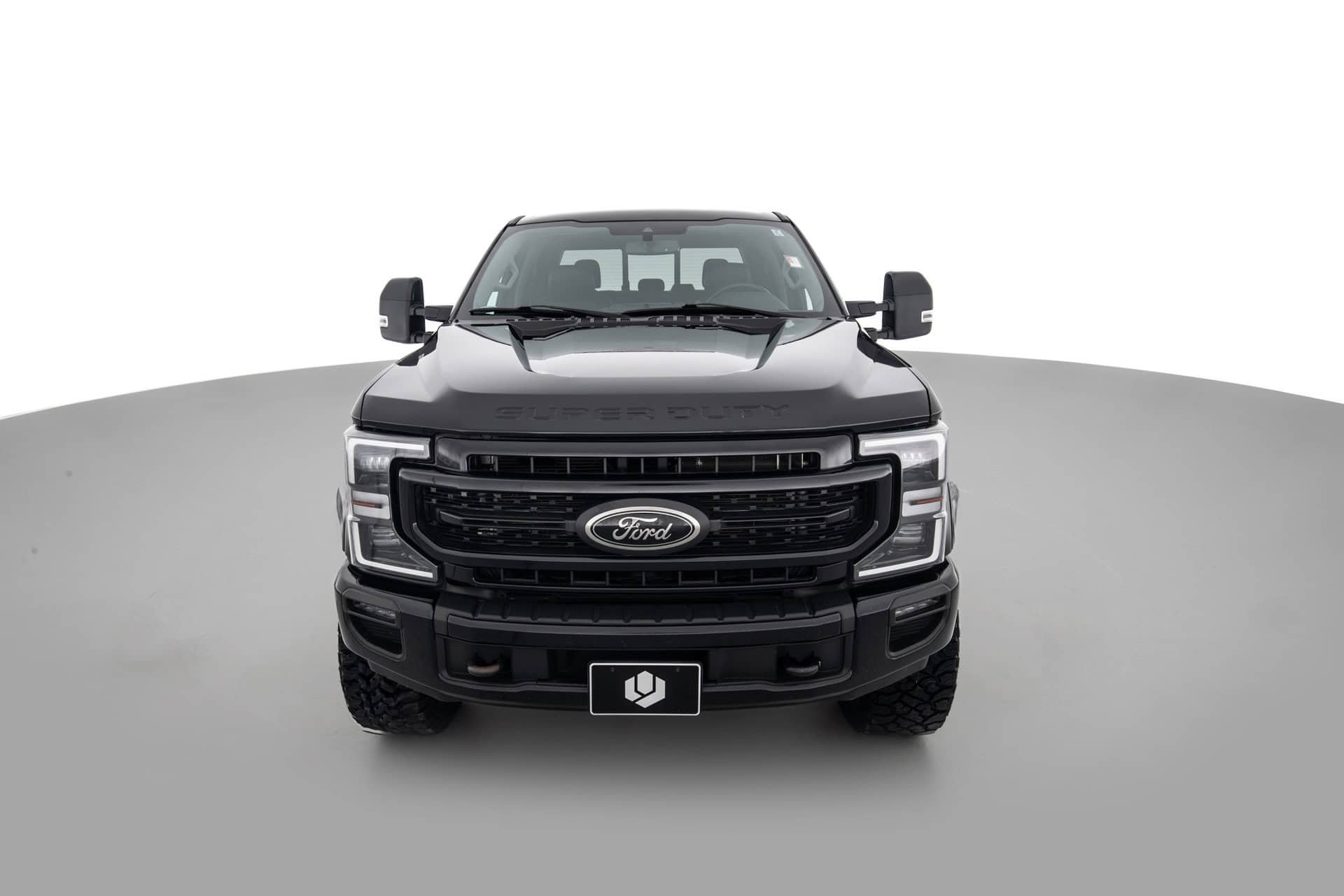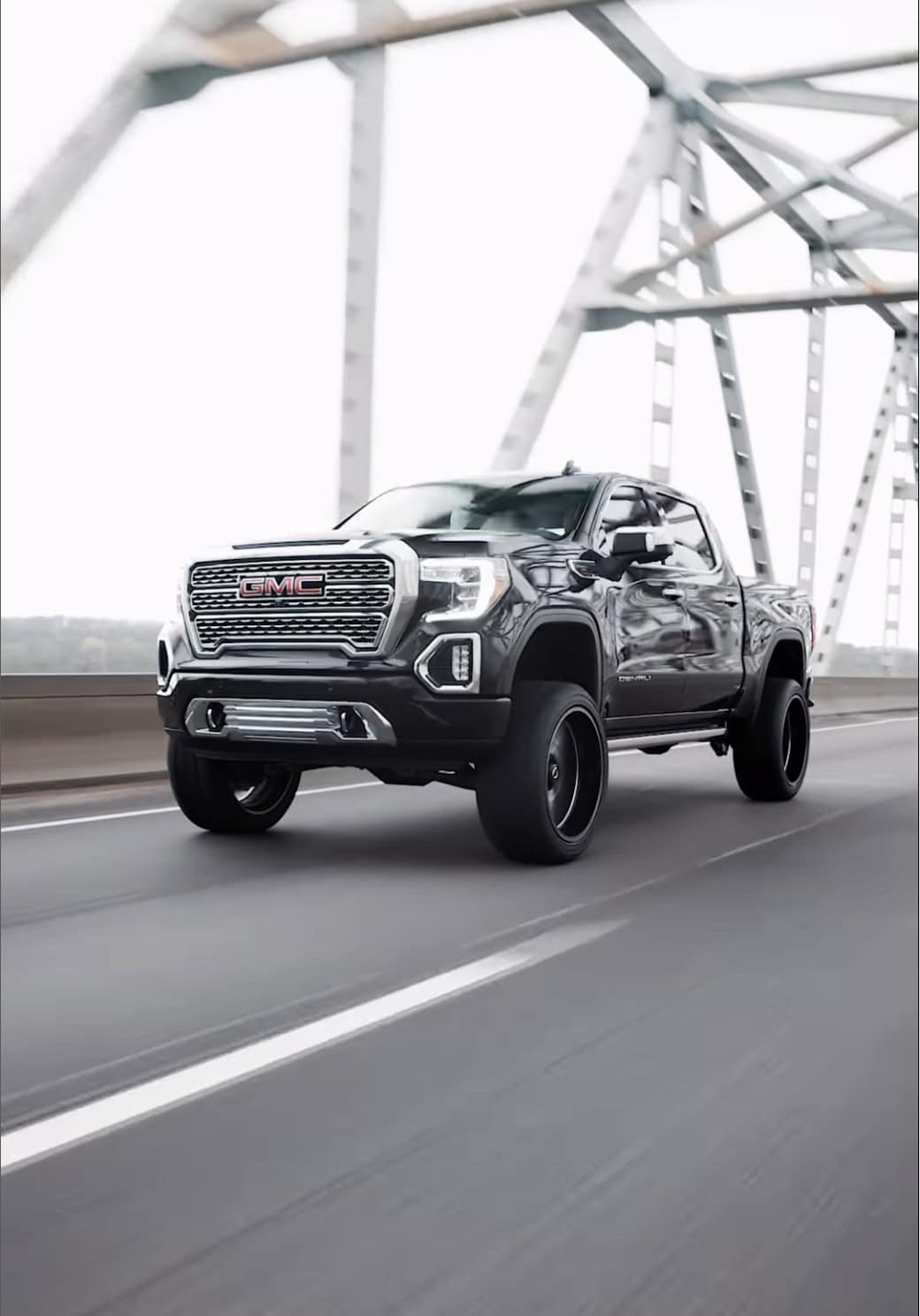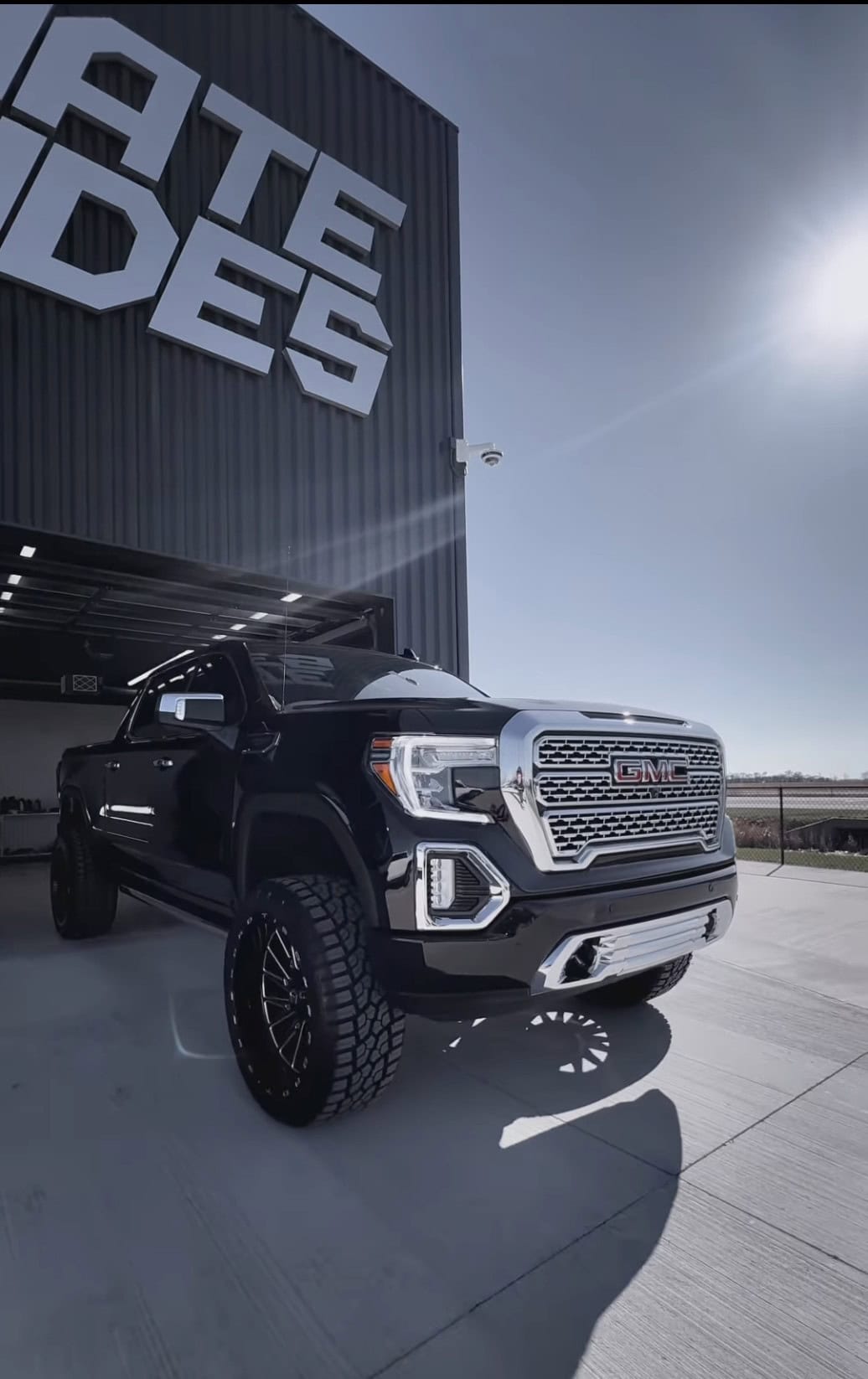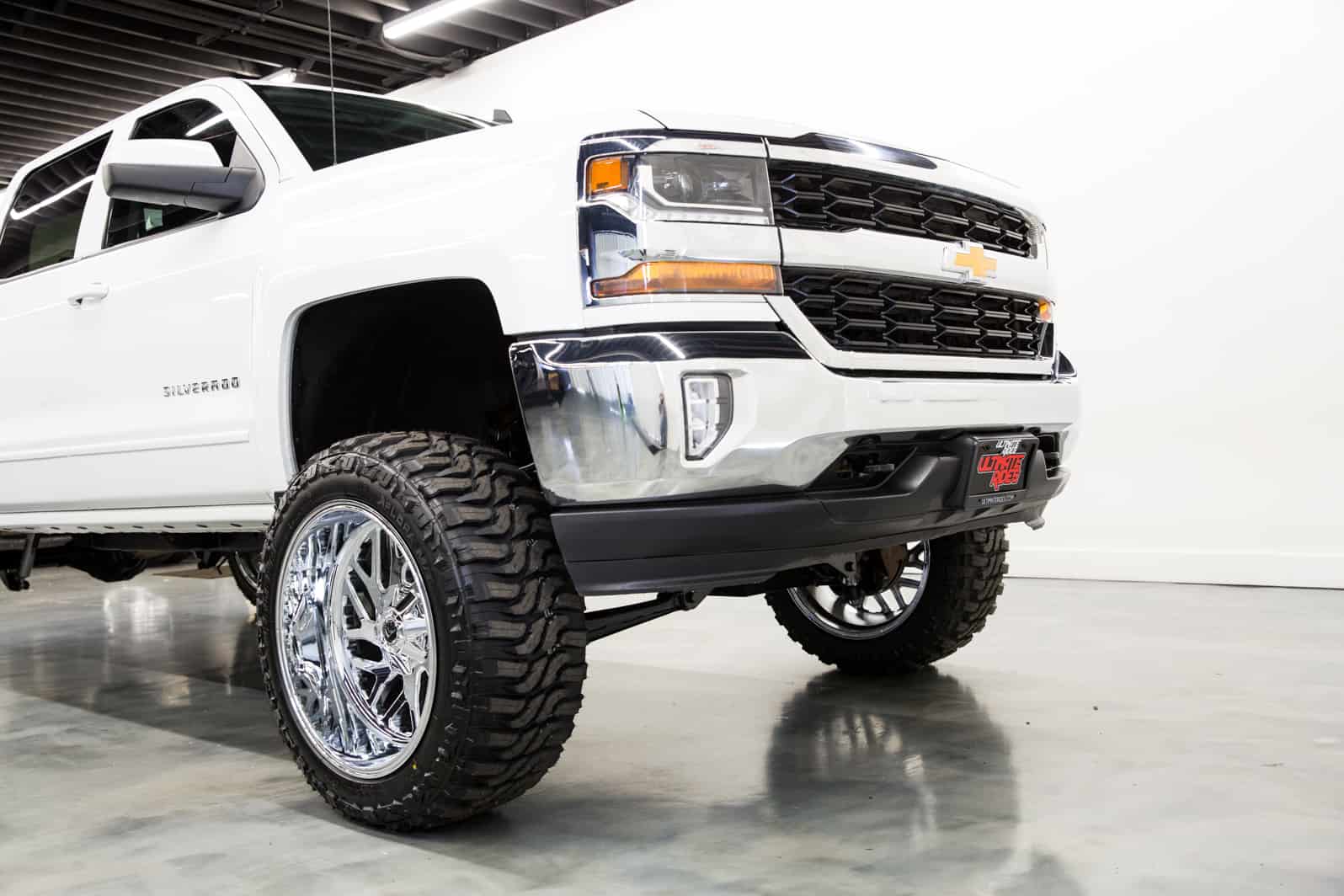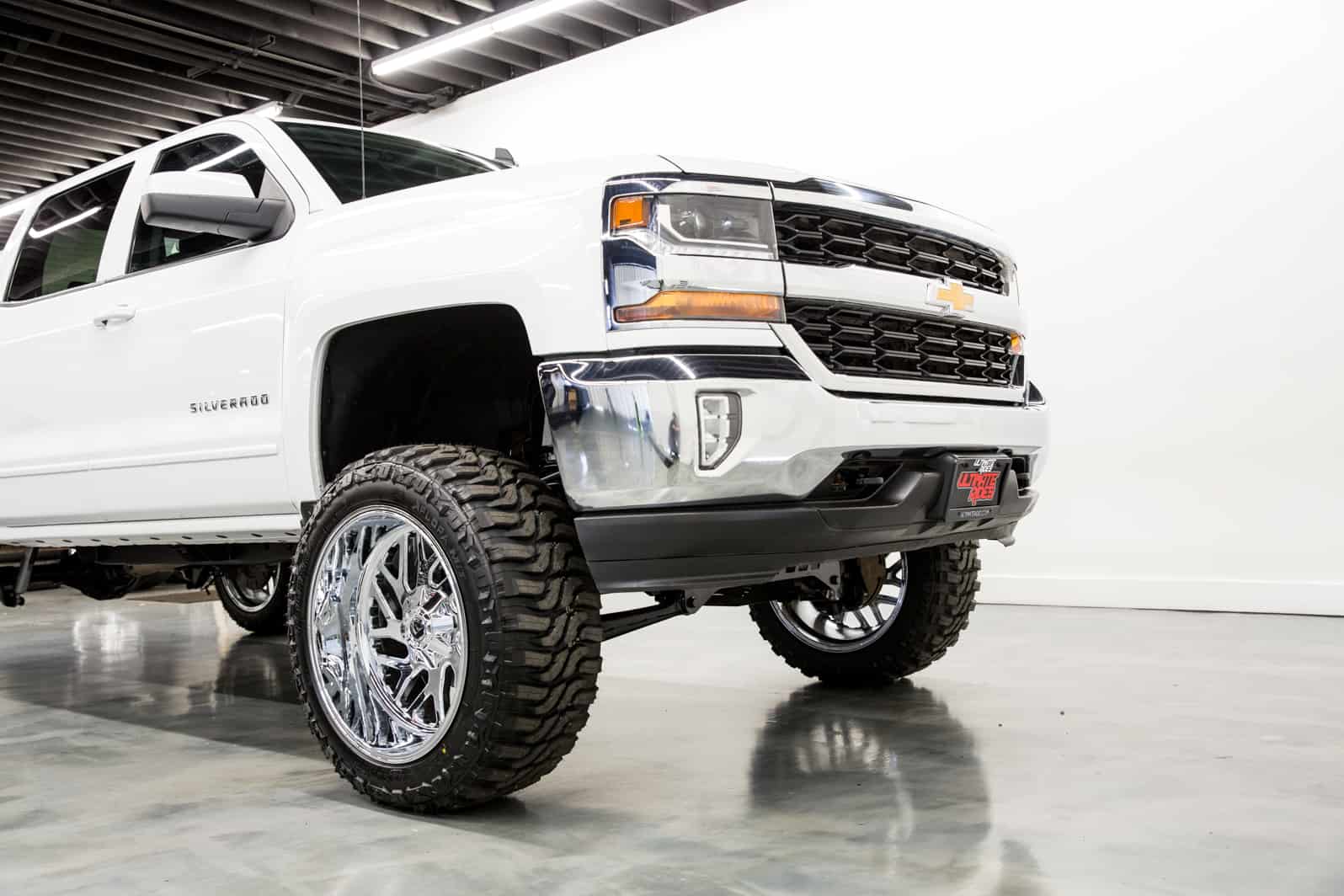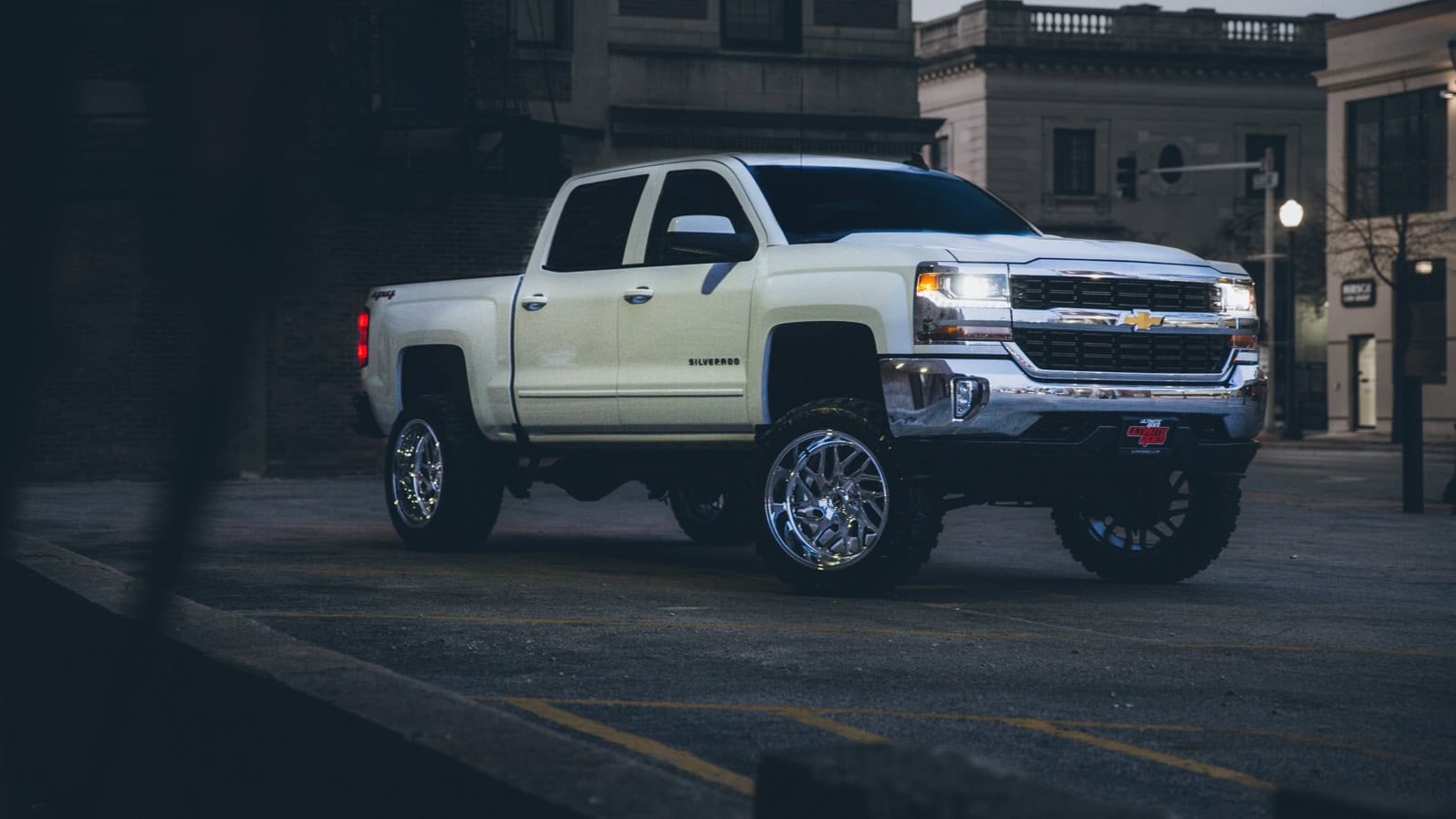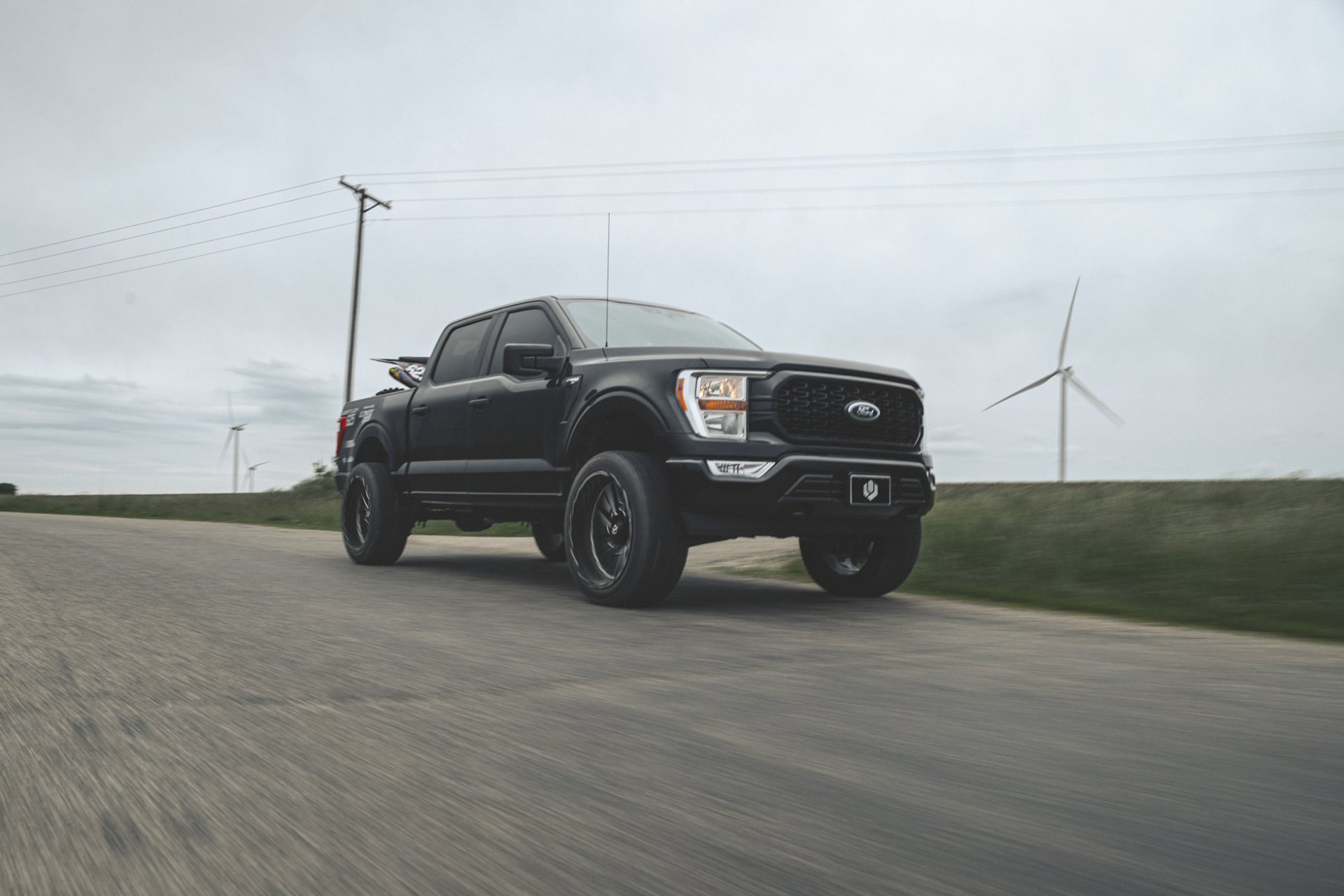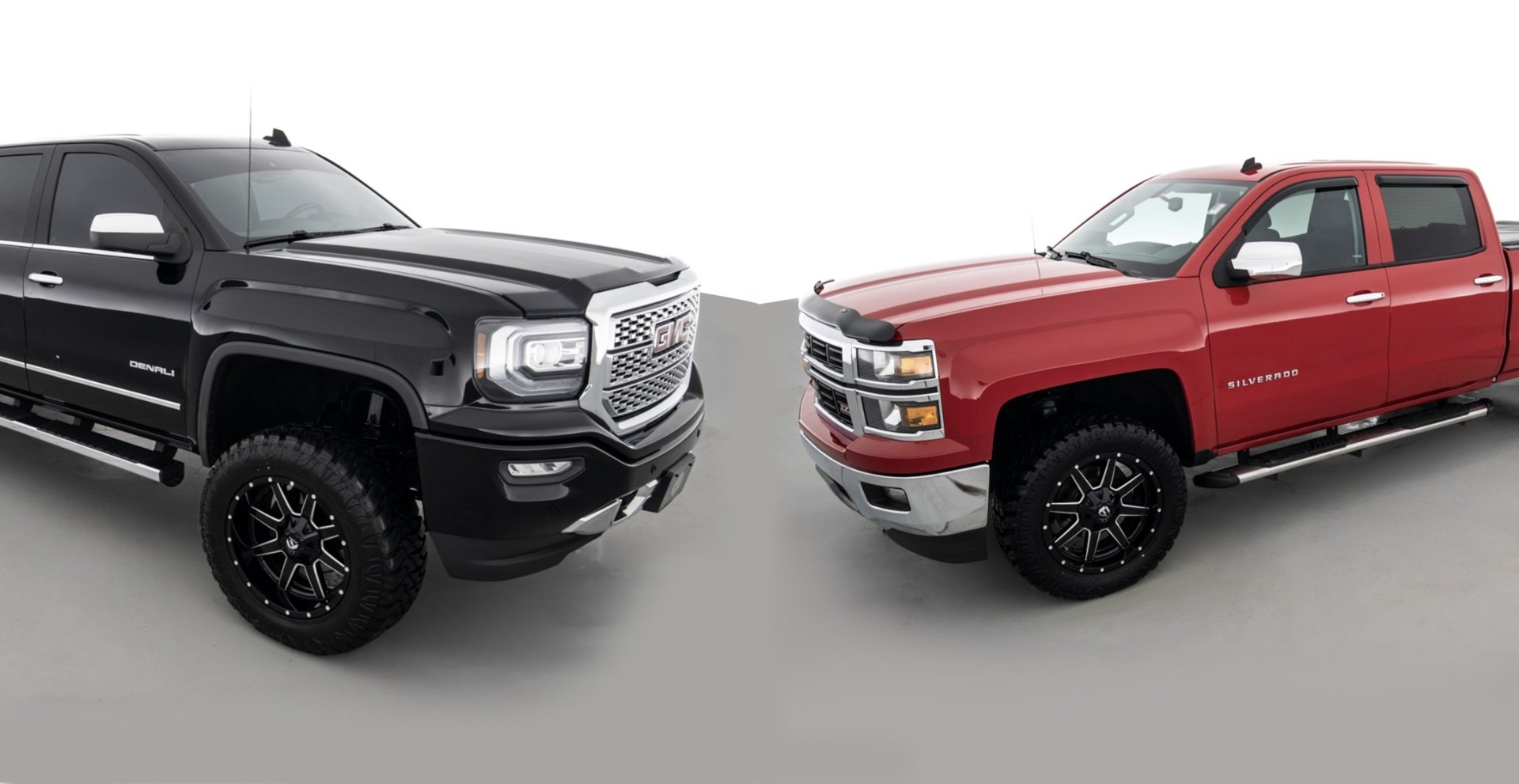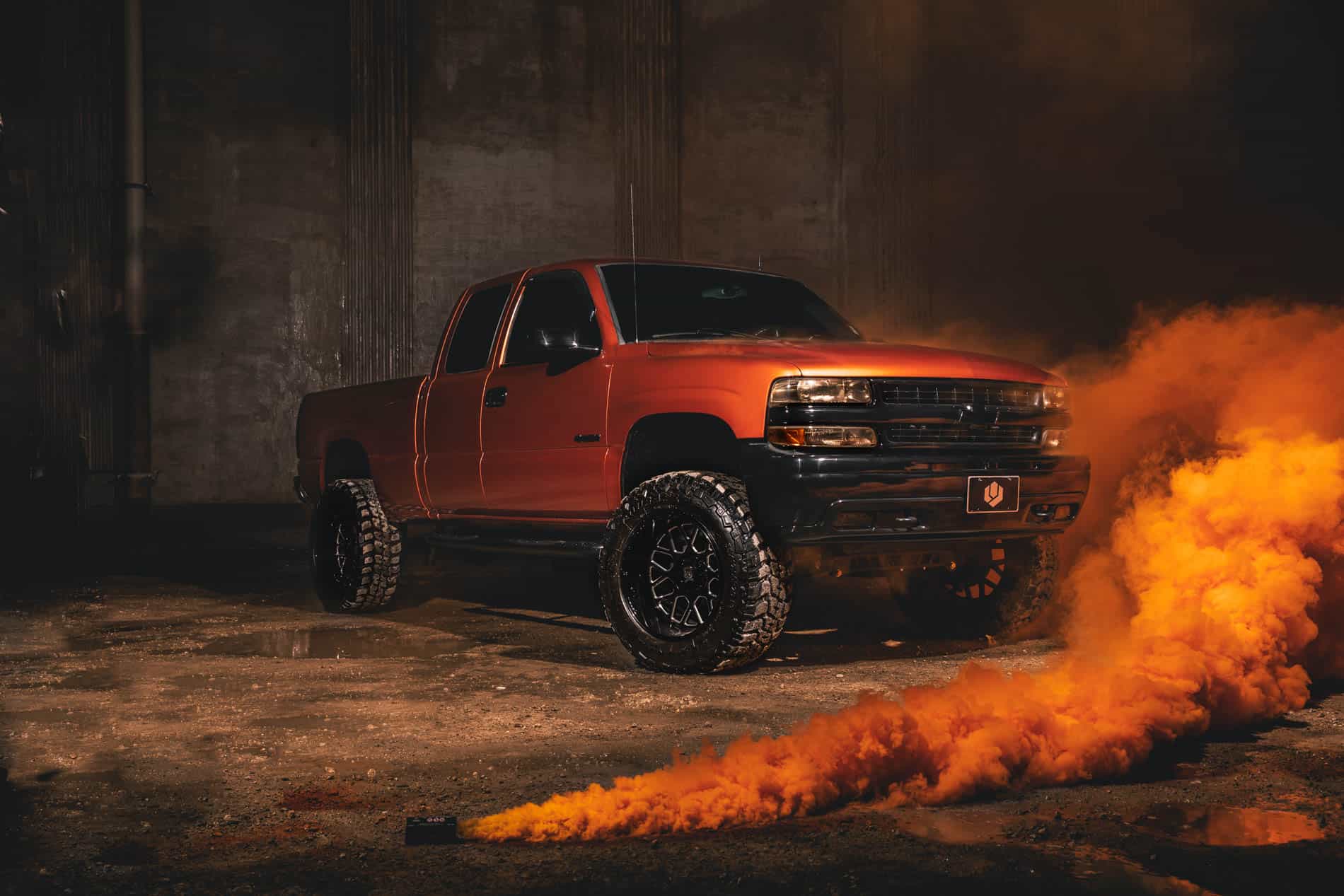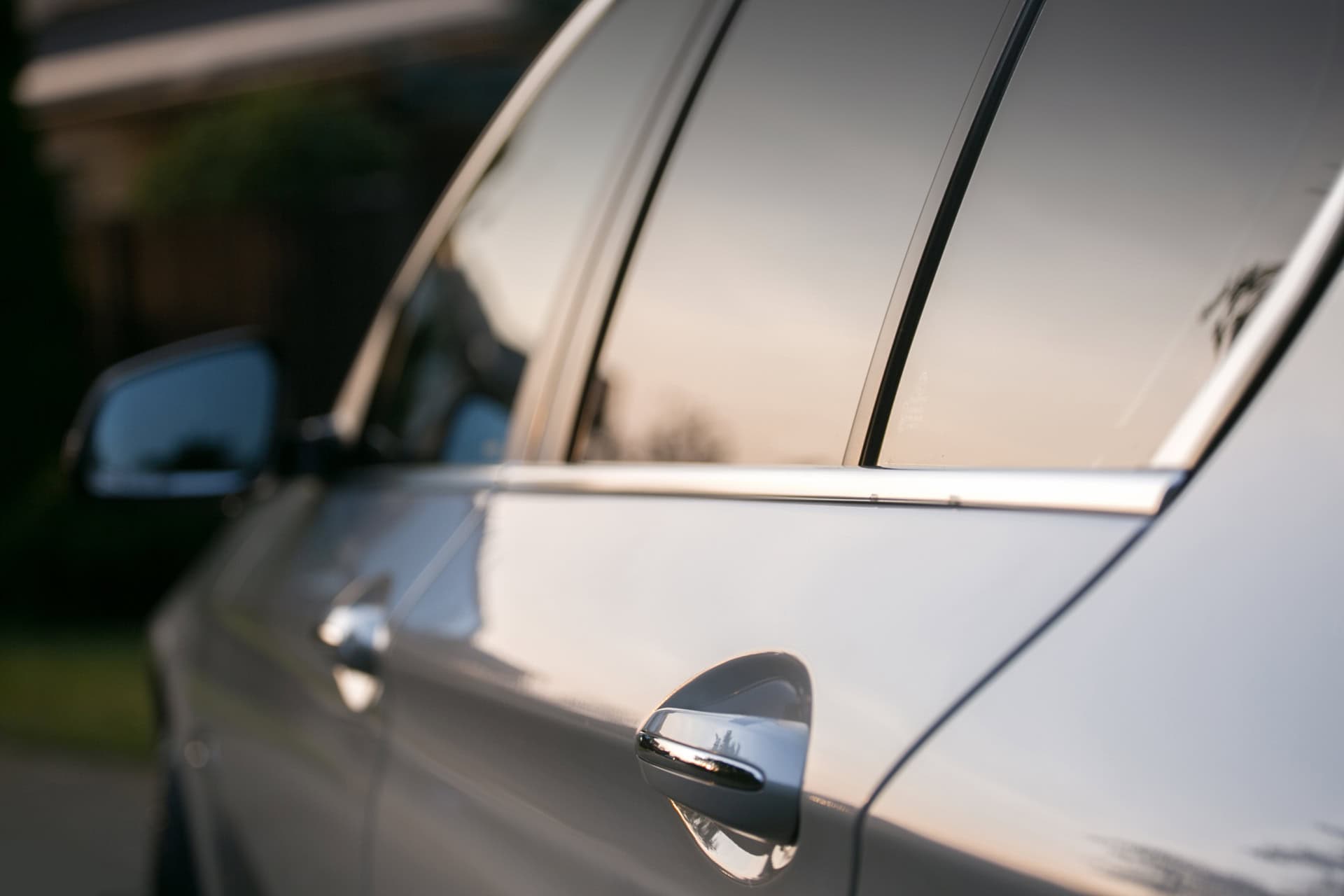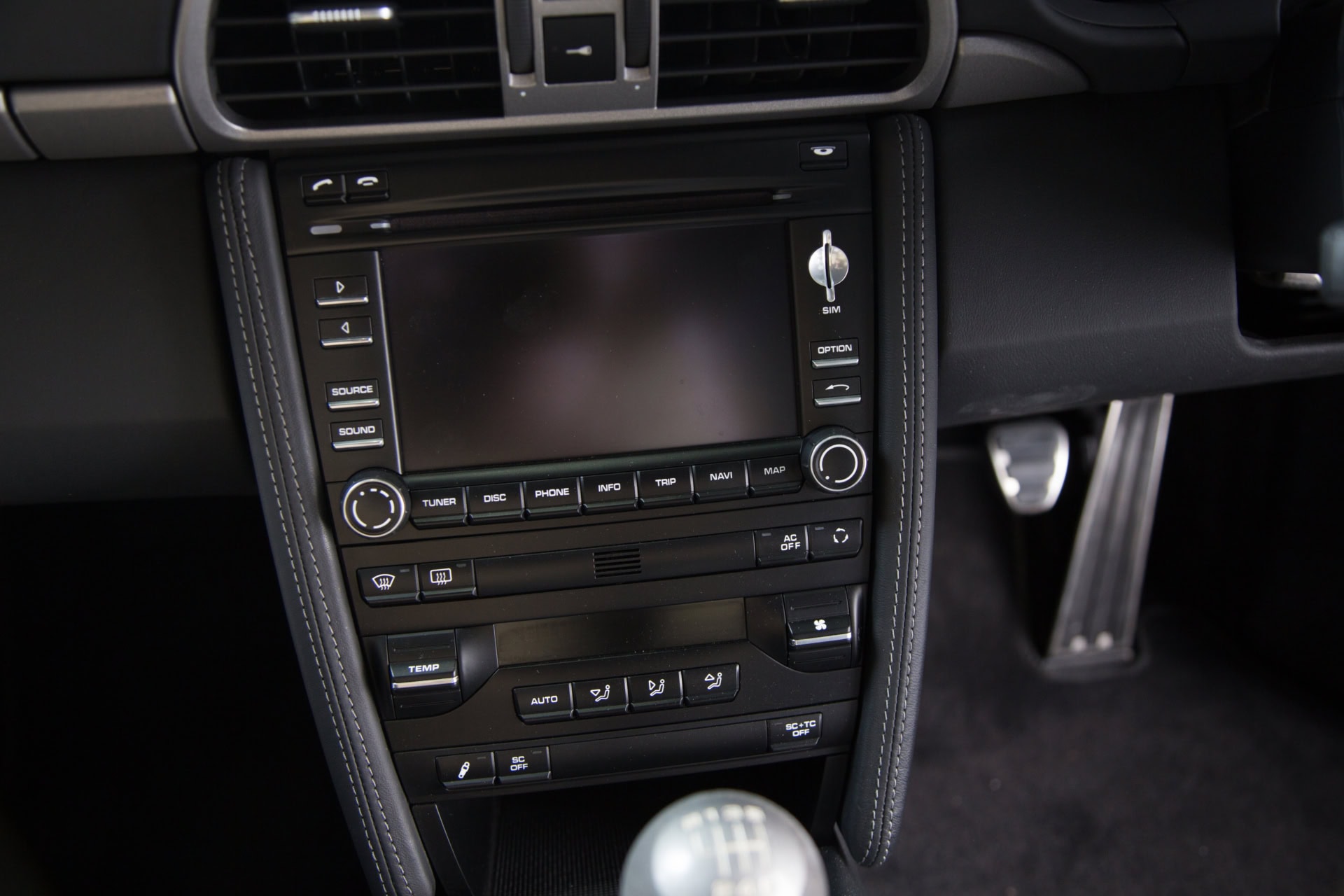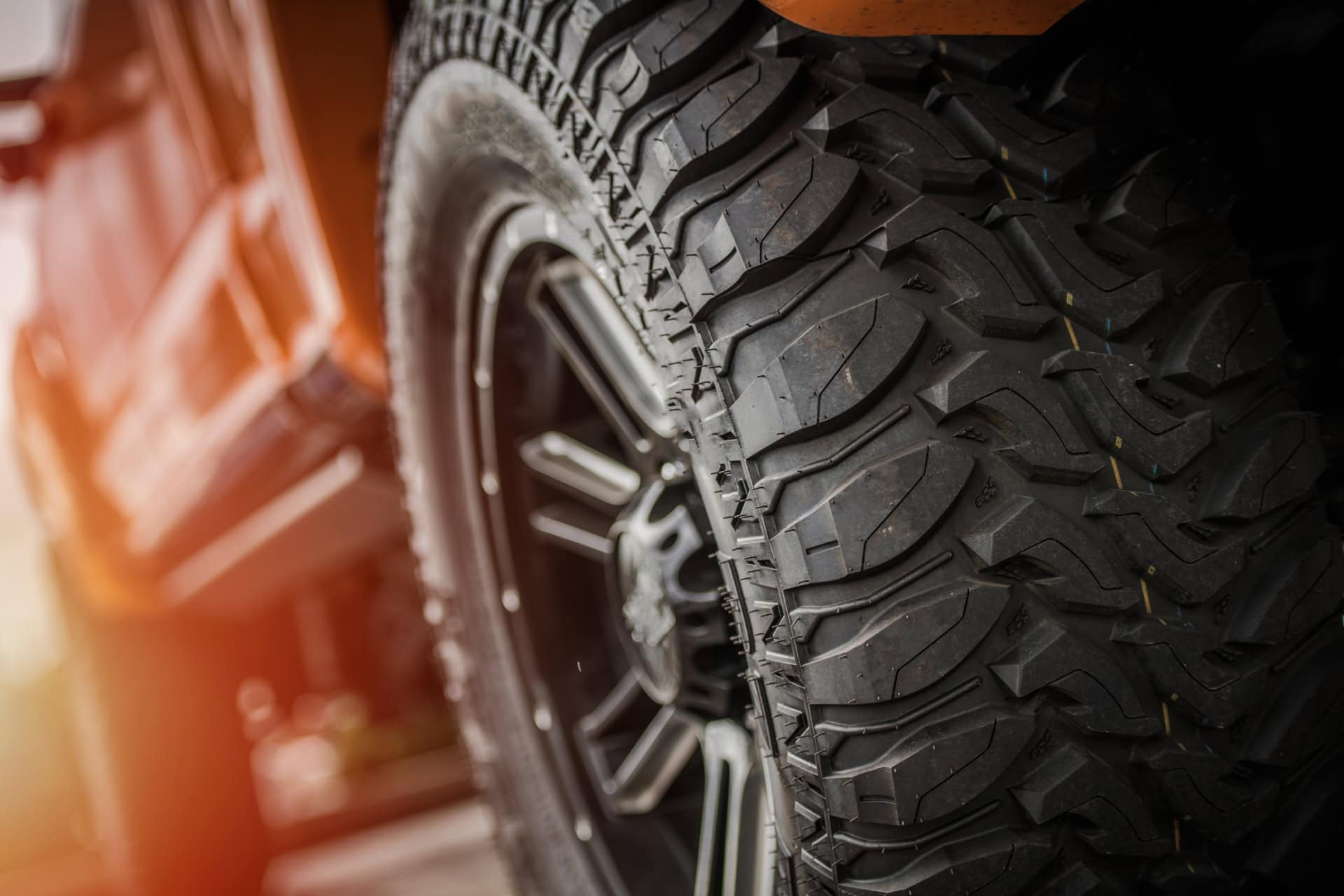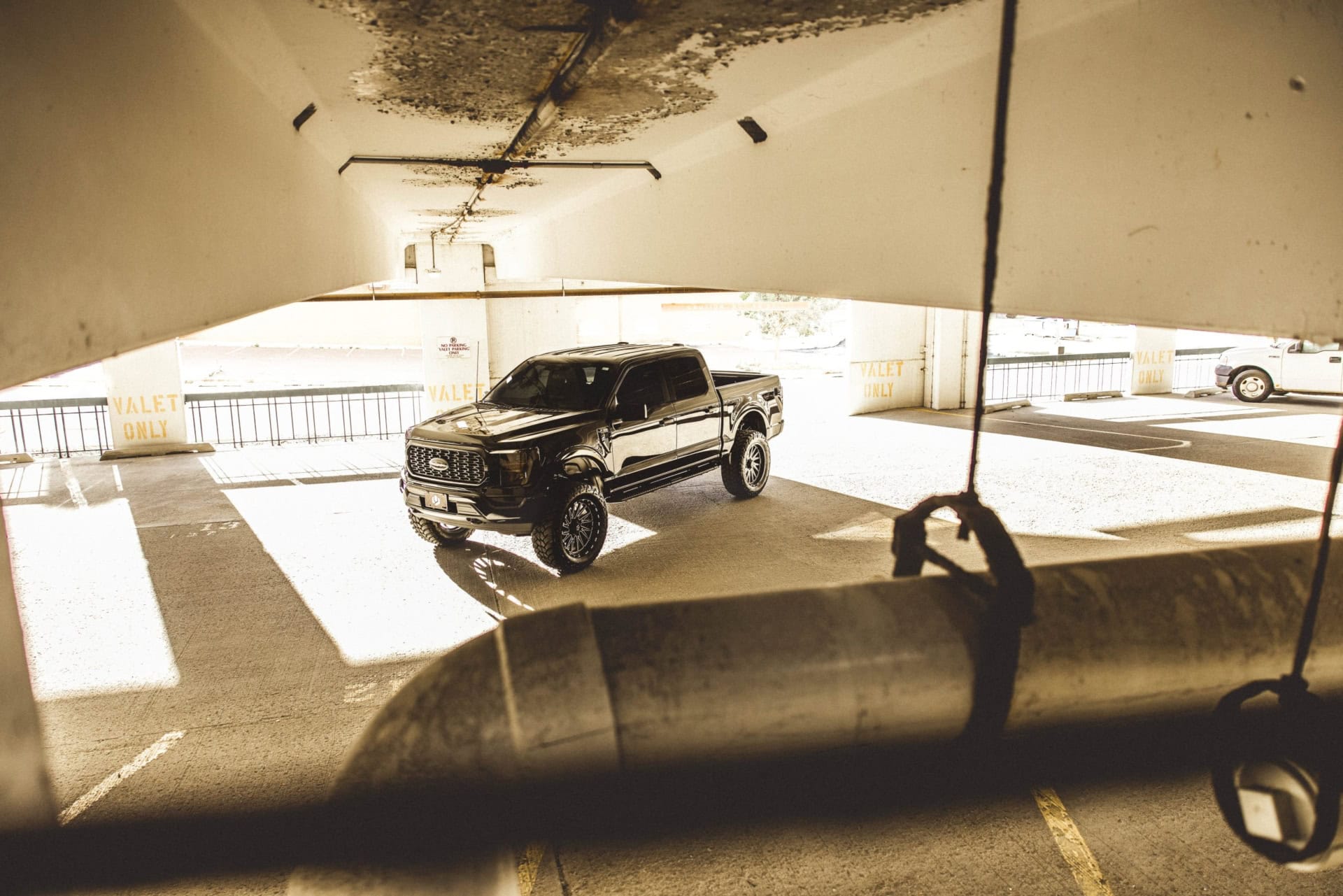Among the most talked-about wheel technologies in the off-road community are beadlock wheels, and for good reason. While not essential for all off-road driving, they excel at handling very low tire pressures.
If you’ve watched rock crawlers navigate steep ledges or desert racers blast through rough terrain, you’ve likely seen beadlock wheels doing their job.
These wheels are popular with off-road enthusiasts because they keep tires firmly in place at air pressures that might cause a standard wheel to lose its seal.
At Ultimate Rides’ Lift Shop, we can install these specialized wheels for drivers who want more control on tough terrain.
Curious if beadlocks belong on your rig? Buckle up – by the end of this guide, you’ll know if these bad boys are your next upgrade or just cool to look at.
What You’ll Learn
- The real deal on beadlocks – no jargon, just straight talk
- Why some off-roaders swear by them (and others stick to regular wheels)
- The truth about street legality that dealers might not tell you
- How to avoid wasting money if you don’t actually need them
- What it really takes to run them on your truck
What Are Beadlock Wheels?
A beadlock wheel uses a metal ring that bolts to the outer edge of the wheel to clamp the tire in place. It’s different from a regular wheel, which just uses air pressure to hold the tire on the rim.
Think of the outer edge of your tire – that’s called the bead. On a normal wheel, this bead sits against the wheel and stays there because of air pressure inside the tire. The higher the air pressure, the tighter the seal. But when you lower the pressure for off-roading, that seal can get weak.
That’s where beadlock wheels come in. Instead of relying on air pressure, they use a ring of bolts to physically lock the tire’s bead to the wheel. This mechanical grip means you can run very low tire pressures without having to worry about the tire slipping off the rim.
The Parts of a Beadlock Wheel
Here’s what makes up a beadlock wheel:
- Inner Wheel Ring: The main body of the wheel that mounts to the vehicle
- Outer Beadlock Ring: A separate ring that bolts to the inner wheel
- Mounting Bolts: Usually 24 to 32 bolts that secure the outer ring
- Tire Bead: The edge of the tire that sits between the rings
- Mounting Surface: The precision-machined area where the rings meet
How Do Beadlocks Work?
The Mechanical Process
Beadlock wheels function through a pretty straightforward but precise mechanical process. When installing a tire on a beadlock wheel:
- The tire’s inner bead is mounted normally on the wheel’s inner bead seat
- The outer bead is positioned against the wheel’s outer mounting surface
- The beadlock ring is placed over the tire’s outer bead
- Multiple bolts are installed in a specific pattern and torqued to specification
- This creates a mechanical clamp that physically prevents the tire from separating from the wheel
The Physics Behind Beadlocks
It’s pretty simple – regular wheels rely on air pressure to push the tire’s beads against the wheel’s bead seats. When you lower the pressure, that force gets weaker. Beadlocks are different because they use a mechanical clamp that keeps working no matter what the air pressure is.
This setup means business for off-roading. When you’re crawling over rocks or pushing through deep sand, in a lot of cases you’ve got to drop your tire pressure way down – sometimes as low as 5-8 PSI.
At these pressures, a regular wheel might let the tire slip or even come completely off the rim. But with beadlocks, those bolts keep everything locked in place, no matter how low you go with the pressure.
Types of Beadlock Wheels
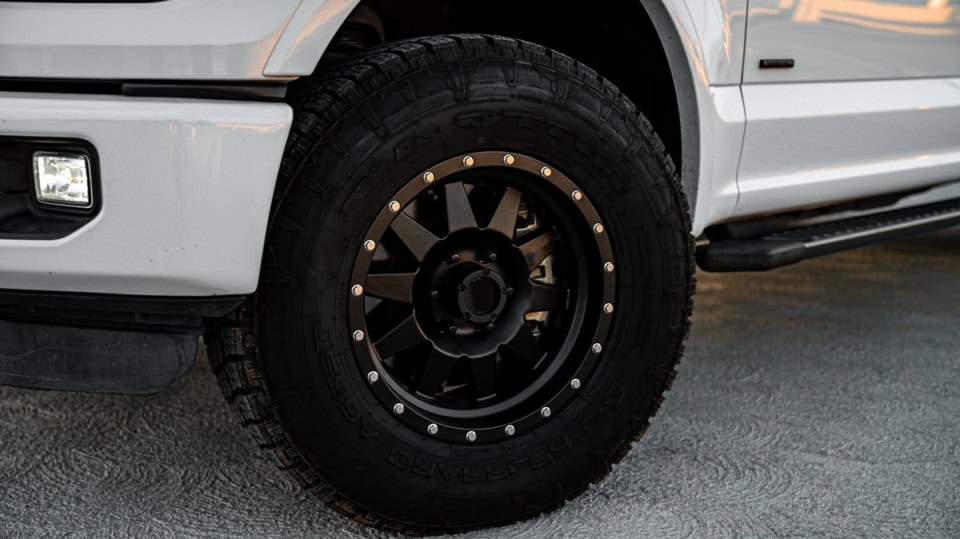
Let’s break down the three main types of beadlock wheels you’ll run into and what each brings to the table.
True Beadlocks: The Real Deal
These are the hardcore off-road warriors designed for extreme terrains, such as rock crawling, mud bogging, and desert racing.
Best For:
- Serious rock crawlers, overlanders, and Baja racers.
- Vehicles that run low tire pressure for maximum grip.
- Dedicated off-road builds that don’t need to be street-legal.
Considerations:
- Not always street-legal due to DOT (Department of Transportation) restrictions in many regions.
- Requires regular maintenance, including checking bolt torque to avoid air leaks.
- Heavier than non-beadlock wheels, which can impact fuel economy and handling on pavement.
If you ask any Wrangler Jeep owner who’s tackled the top Illinois off-roading trails, they’ll tell you true beadlocks offer maximum tire security in extreme conditions.
Beadlock-Capable: The Best of Both Worlds
For those who want off-road performance without the legal issues (we’ll discuss this in a while), beadlock-capable wheels are an excellent middle-ground option. These wheels look like true beadlocks, but the outer ring is cosmetic unless converted.
Best For:
- Daily drivers that split time between pavement and trails.
- Those who may upgrade to true beadlocks later but want DOT-approved wheels for now.
Advantages:
- Street-legal in most places (DOT-approved).
- No extra maintenance is required when used as standard wheels.
- Can be converted into actual beadlocks with the correct hardware.
If you want beadlock-capable wheels on your lifted truck, Ultimate Rides’ custom off-road builds can outfit your ride.
Simulated Beadlocks: All Show, No Go (But That’s Okay!)
Some drivers love the beadlock look but don’t need the function. That’s where simulated beadlock wheels come in. These wheels mimic the aggressive styling of true beadlocks but function like standard wheels, meaning they don’t actually clamp the tire’s bead.
Best For:
- Drivers who want off-road aesthetics without mechanical complexity.
- Those who don’t need extreme off-road performance.
- If you’re looking for an easy-maintenance alternative.
Benefits:
- Fully street-legal (DOT-approved).
- Zero extra maintenance—no bolts to check, no air leaks to worry about.
- More affordable than true or beadlock-capable wheels.
Reality Check:
While they look rugged, they don’t offer any functional advantage for off-road performance. However, for many truck and Jeep owners, the tough aesthetic is still worth it.
Which One Should You Choose? |
|||
|---|---|---|---|
| Street Legal? | 🚫 No (in most areas) | ✓ Yes | ✓ Yes |
| Off-Road Performance | Best for extreme terrains | Good for off-road use | Standard |
| Maintenance Required? | 🔧🔧🔧 High | 🔧 Low | None |
| Can Be Converted? | 🚫 No (already beadlocks) | ✓ Yes | 🚫 No |
Pros and Cons of Beadlock Wheels
Let’s lay out what these wheels do well and where they might not be your best choice.
The Good Stuff
- Rock-Solid Tire Security: You can drop your tire pressure as low as you want. Those bolts keep your tire firmly on the wheel, so you won’t have to worry about it slipping off when you’re crawling through tough spots.
- Serious Off-Road Performance: When you need maximum traction in sand, mud, or over rocks, you can run super-low tire pressures that would be risky with standard wheels.
- Built Tough: These wheels are made to take a beating. The extra reinforcement around the rim means they can handle the abuse of hard off-road driving.
- Easier Tire Changes: With the mechanical ring system, you can mount or dismount tires without special tire shop equipment – handy when you’re out on the trails.
- Looks That Turn Heads: No doubt about it, beadlock wheels just look tough. Those visible bolts and that extra ring give your vehicle that hardcore off-road style that stands out from the crowd.
The Not-So-Good Stuff
- Weight: These aren’t your lightweight street wheels. Beadlocks add serious heft to each corner of your vehicle, which means:
- More unsprung weight affects handling
- Reduced fuel economy
- Extra stress on suspension components
- Maintenance Demands: Forget mount-and-forget convenience. Beadlocks need regular attention:
- Bolt torque checks before and after off-road use
- Cleaning of mounting surfaces
- Regular inspection for damage or wear
- Cost: Your wallet will feel it:
- Higher initial purchase price
- More frequent maintenance
- Potential specialist installation fees
And here’s the big one that leads us to our next topic – legality. Many true beadlock wheels aren’t street-legal because they don’t meet DOT requirements. This creates some real challenges for anyone wanting to use their vehicle both on and off-road…
Are Beadlock Wheels Street Legal?
The legal status of beadlock wheels isn’t as simple as yes or no. The Department of Transportation (DOT) has specific standards for wheels used on public roads, and traditional beadlock wheels – the ones with that external clamping ring – typically don’t meet these requirements. This isn’t because they’re explicitly illegal; they just haven’t been certified for street use.
This is where things get tricky. Most true beadlock wheels aren’t DOT-approved, which means they’re meant for off-road use only. As we’ve discussed earlier, some manufacturers make beadlock-capable wheels that meet DOT standards in their original form, giving you a legal option that looks like beadlocks and can be converted later.
Before installing any beadlock wheels, you should:
- Check your state and local regulations about wheel modifications
- Talk to your insurance company – non-DOT-approved wheels could affect your coverage
- Consider beadlock-capable wheels if you need to drive on public roads
- Keep documentation about any DOT-approved wheels you install
The bottom line? Don’t assume any beadlock wheel is street-legal just because you see others using them. Check your local laws, talk to your insurance company, and make sure you understand what you’re getting into. Off-road performance is great, but staying legal on the street matters too.
Making the Decision: Do You Need Beadlocks?
Beadlock wheels aren’t for everyone. If you’re mostly driving on pavement and your idea of off-roading is a dirt road to a campsite, you probably don’t need them. Regular wheels will handle that just fine, and you’ll save yourself the extra maintenance and cost.
But if you’re the type who regularly tackles serious trails, rock crawls, or desert runs where ultra-low tire pressure is a requirement, beadlocks start making a lot more sense. They’re particularly worth considering if you find yourself airing down your tires below 15 PSI to get through tough spots.
For weekend warriors who split time between trails and streets, beadlock-capable wheels might be your sweet spot. You’ll get that aggressive look and the option to convert them later without dealing with the legality issues of true beadlocks for daily driving.
In the long term, if you drive mostly on-road, leave the wheels in standard mode. If you’re constantly hitting extreme terrain, commit to full-time beadlock mode.
Ready to Lock it Down? The Final Word on Beadlocks
Beadlock wheels pack some serious off-road punch, but they’re not a simple upgrade. They need extra attention, hit the wallet harder than standard wheels, and come with those legal considerations we talked about. But for the right driver on the right terrain, they’re a fantastic addition to your truck or jeep.
Thinking about beadlocks for your truck? If you’re tired of looking at the same old wheel setups, it might be time to create something unique. At Ultimate Rides, we can build custom off-road vehicles that match exactly what you’re after.
Get in touch, and let’s talk about your next build.
